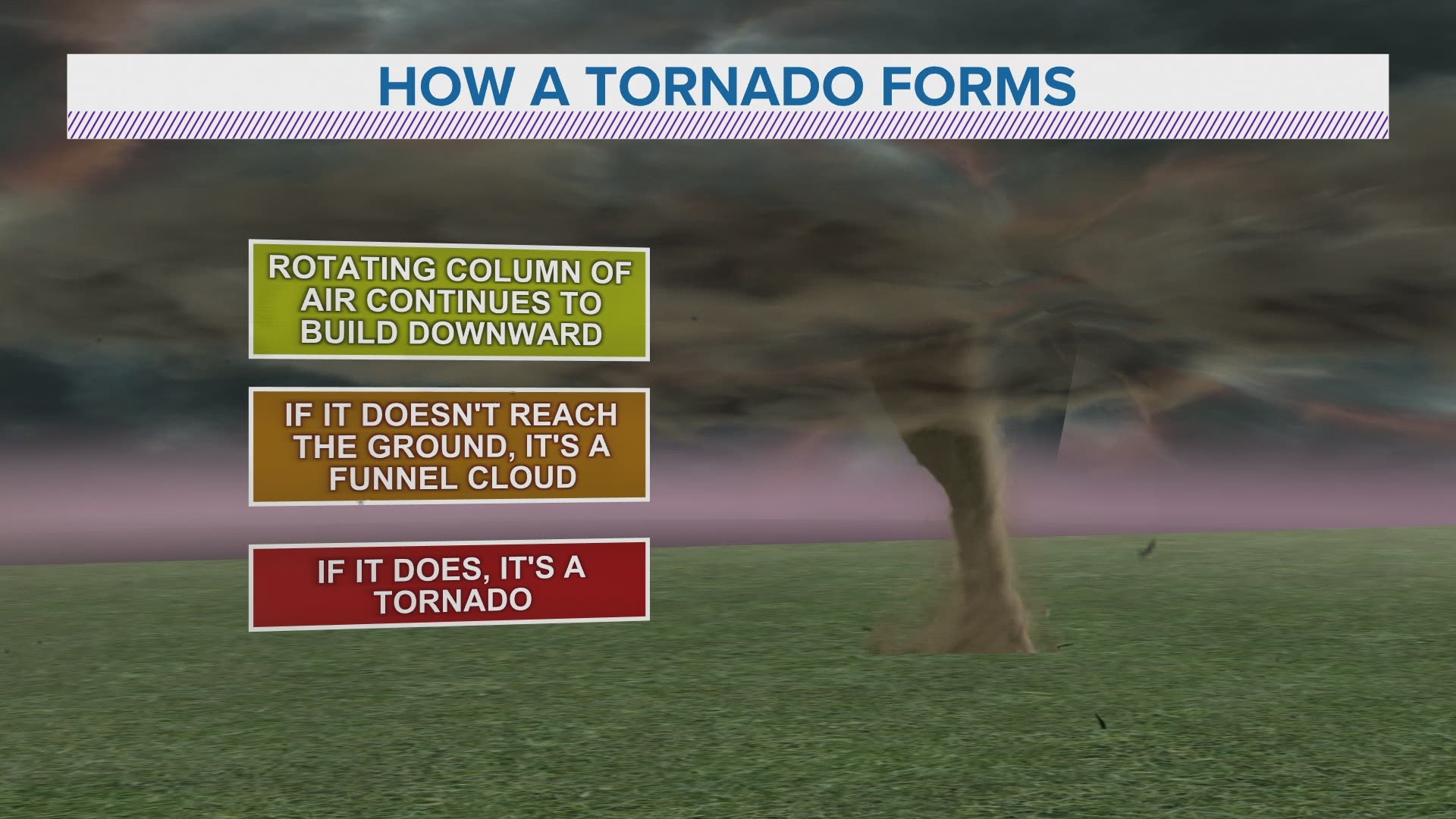DES MOINES, Iowa — Iowa is no stranger to tornadoes and severe weather, especially during the spring and summer when big storm systems often target the Midwest.
Sometimes, tornadoes can form and then quickly dissipate over an open area of land, causing little to no impacts to life or property.
Unfortunately, this scenario is not always the case, and tornadoes can threaten populated neighborhoods and communities.
Tornadoes vary in strength, size, speed and duration, but each must be taken seriously as their path and impacts can change quickly.
In July 2018, three significant tornadoes occurred across central Iowa, including EF-2s in Bondurant and Pella and a destructive EF-3 in Marshalltown.
On May 22, 2019, an EF-1 tornado touched down briefly near Adair in the middle of the night.
The twister near Adair produced maximum wind gusts of 95 mph during the short time it was on the ground.
Throughout the state's history, several violent EF-5 tornadoes have been reported, including the 2008 twister near Parkersburg and a pair of twisters in Charles City and Oelwein in 1968.
Tornadoes normally form in strong thunderstorms, where warm and humid is rising in the storm's updraft, while cool air is coming down out of the storm.
Inside the storm, these turbulent conditions can result in rolling, or spinning, air currents inside the cloud, especially when winds are strong at the Earth's surface and in the upper levels of the atmosphere.
This "tube" of rotating air begins with horizontal motion, but as the air gets pulled up into the thunderstorm's updraft, it can become vertical, causing the entire thunderstorm to spin.
At first, this rotating thunderstorm may produce a wall cloud, but if the column of air begins to move back towards the Earth's surface, a tornado is likely imminent.
A rotating column of air is referred to as a funnel cloud until it makes official contact with the ground, at which time it is then classified as a tornado.
There are many myths about tornadoes and their behavior, but it's important to know twisters are absolutely capable of affecting large cities and towns, even if it seems more logical for them to remain over open land and remote areas.
Another common misconception is that tornadoes can only occur during Iowa's traditional weather season, like May, June, and July.
Although this is typically when tornadoes normally develop in the Midwest, they can surprisingly occur at any time throughout the year.
Iowa has even reported a handful of tornadoes in the winter.
When a tornado warning is issued, or when a tornado threatens your community, it's incredibly important to have a safety plan ready to go.
Seeking shelter during a tornado threat means moving to the lowest floor of your home or building, staying away from windows and doors whenever possible.
A basement is the best place to take shelter, but interior closets, bathrooms, and hallways are other good options.
Since Iowans are accustomed to severe weather threats, it may be tempting to go outside looking for a tornado.
This is not advised, as the conditions during severe weather can rapidly change, often with little warning.
Tornadoes can be frightening and fascinating all at the same time.
While we never wish for tornadoes, the violent storms are a part of Iowa life.
Remember, whenever a tornado warning, or other severe weather alert, is issued, count on Local 5's team of meteorologists to keep you and your family safe and informed.

